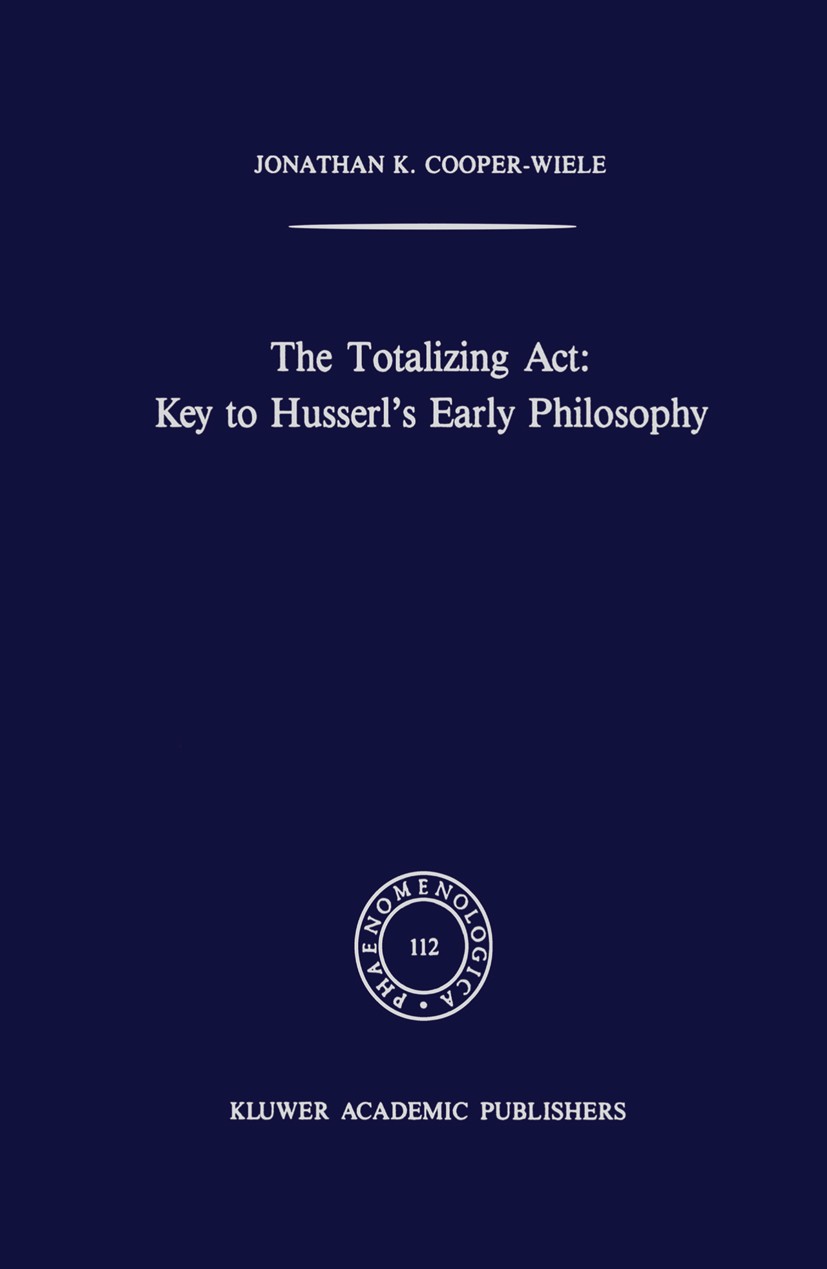| 书目名称 | The Totalizing Act: Key to Husserl’s Early Philosophy | | 编辑 | Jonathan Kearns Cooper-Wiele | | 视频video | http://file.papertrans.cn/922/921298/921298.mp4 | | 丛书名称 | Phaenomenologica | | 图书封面 |  | | 描述 | The Origins of Husserl‘s Totalizing Act At noon on Monday, October 24th, 1887, Dr. Edmund G. Husserl defended the dissertation that would qualify him as a university lecturer at Halle. Entitled "On the Concept of Number," it was written under Carl Stumpf who, like Husserl, had been a student of Franz Brentano. In this, his first published philosophical work, Husserl sought to secure the foundations of mathematics by deriving its most fundamental concepts from psychical acts.! In the same year, Heinrich Hertz published an article entitled, "Con cerning an Influence of Ultraviolet Light on the Electrical Discharge." The article detailed his discovery of a new "relation between two entirely different forces," those of light and electricity. Hermann von Helmholtz, whose theory guided Hertz‘s initial research, called it the "most important physical discovery of the century," and Hertz became an immediate sensation. He lectured on his discovery in 1889 before a general session of the German Association meeting in Heidelberg. In this lecture that, as he wrote beforehand to Emil Cohn, he was deter mined should not be "entirely unintelligible to the laity," Hertz explained that light ethe | | 出版日期 | Book 1989 | | 关键词 | Edmund Husserl; Hermann von Helmholtz; concept; interpret; philosophy | | 版次 | 1 | | doi | https://doi.org/10.1007/978-94-009-2259-4 | | isbn_softcover | 978-94-010-7512-1 | | isbn_ebook | 978-94-009-2259-4Series ISSN 0079-1350 Series E-ISSN 2215-0331 | | issn_series | 0079-1350 | | copyright | Springer Science+Business Media Dordrecht 1989 |
The information of publication is updating

|
|
 |Archiver|手机版|小黑屋|
派博传思国际
( 京公网安备110108008328)
GMT+8, 2025-11-13 06:40
|Archiver|手机版|小黑屋|
派博传思国际
( 京公网安备110108008328)
GMT+8, 2025-11-13 06:40


